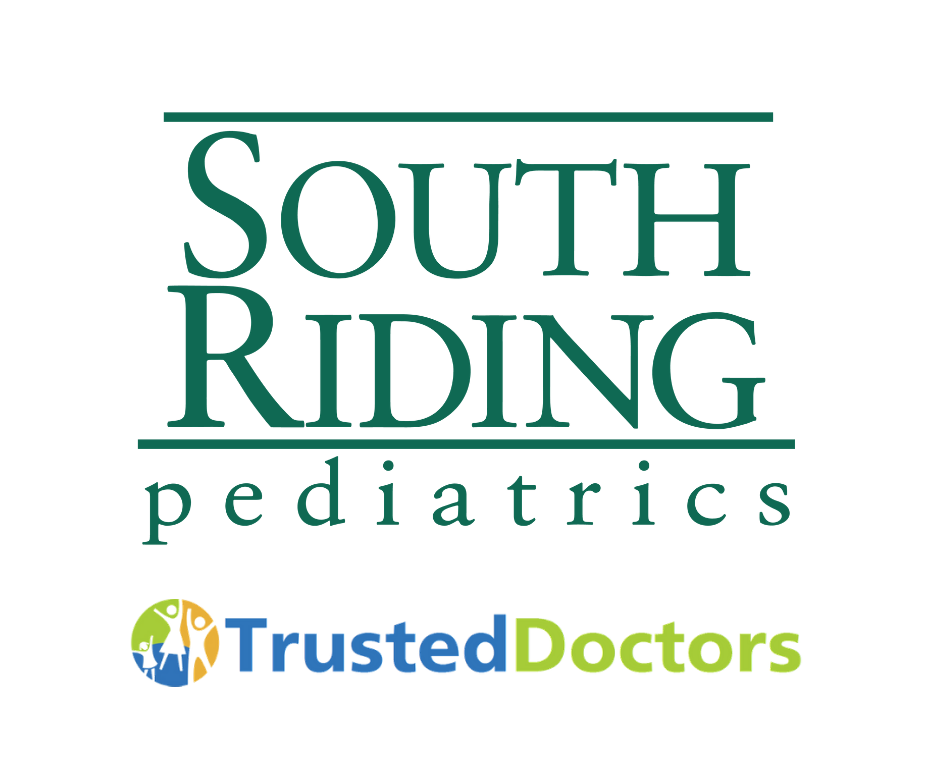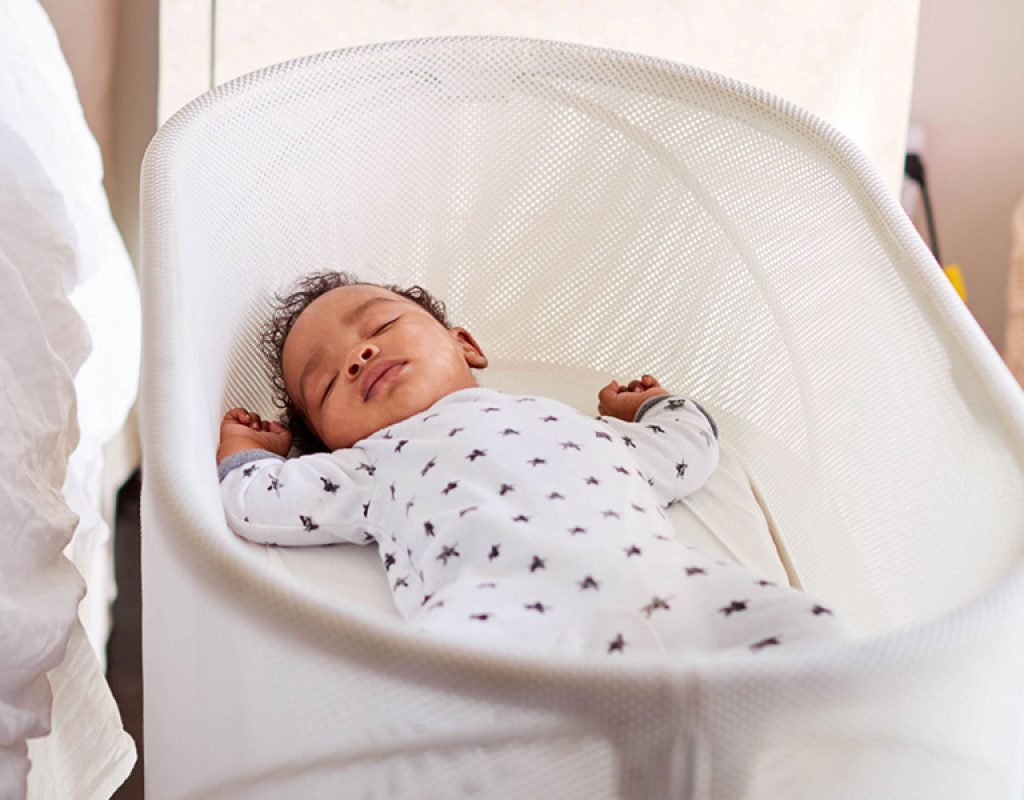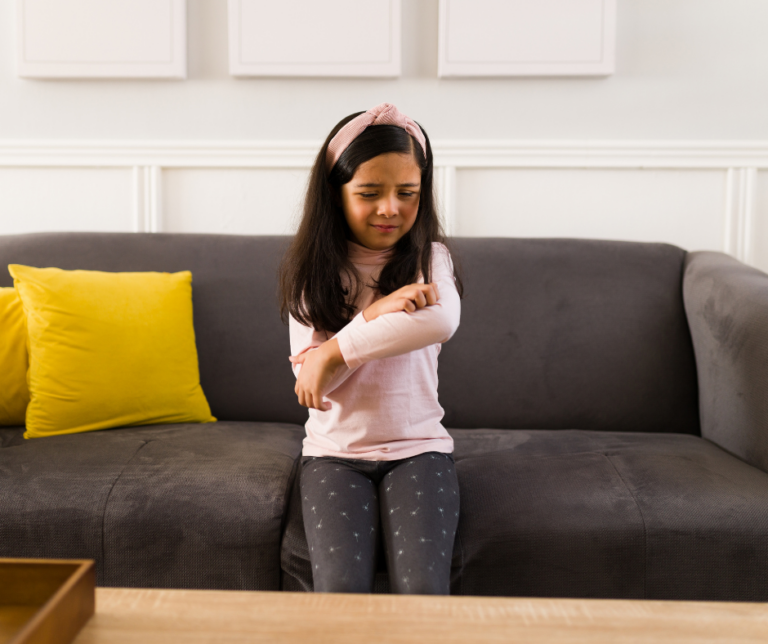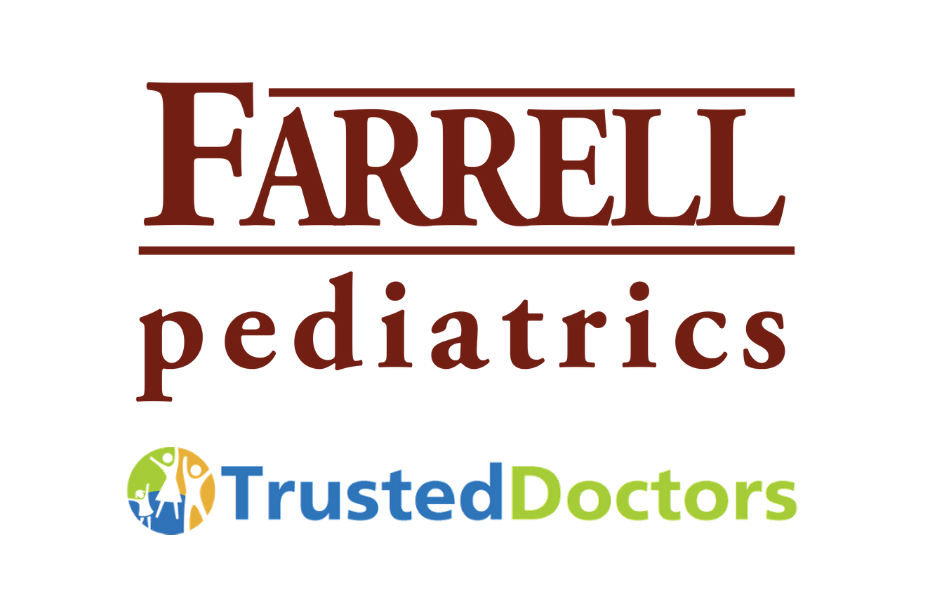October is Sudden Infant Death Syndrome (SIDS) Awareness Month. More than 1 out of 3 sudden unexpected infant deaths that occur in the United States each year are from SIDS.
SIDS, also commonly referred to as “crib death,” is a sudden and silent medical disorder that can occur anytime during a baby’s first year, even if the baby appears to be otherwise perfectly normal and healthy. Cribs themselves don’t cause SIDS, but a baby’s sleep environment can significantly influence the risk of SIDS if proper care and precautions are not taken.
The exact cause of SIDS is not known at this time. Research suggests that infants who die from SIDS may be born with brain abnormalities or defects. Currently there is no way to identify babies who have these abnormalities, but researchers are working to develop specific screening tests. Brain defects alone are not enough to cause a SIDS death though. Several factors put babies at higher risk for SIDS.
Babies are at higher risk for SIDS if they:
- Sleep on their stomachs
- Sleep on soft surfaces, such as an adult mattress, couch, or chair
- Sleep on or under soft or loose bedding
- Overheat during sleep
- Are exposed to cigarette smoke
- Sleep in an adult bed with parents, other children, or pets; this situation is especially dangerous if:
- The adult smokes, has recently had alcohol, or is tired
- The baby is covered by a blanket or quilt
- The baby is sharing the bed with more than one person
- The baby is younger than 14 weeks of age
There are several ways to reduce these risk factors. Use the checklist below to ensure you are providing a safe sleep environment for your baby.
-
- Always place your baby on their back anytime you put them to sleep, whether it be for a nap or bedtime. Babies who are used to sleeping on their backs, but who are then placed to sleep on their stomachs, such as for a nap, are at very high risk for SIDS.
- Use a firm and flat sleep surface, such as a mattress in a safety-approved crib, covered by a fitted sheet with no other loose bedding and no pillows in the sleep area.
- Share your room with your baby, but NOT your bed. Keep the baby in your room close to your bed, but in a separate sleep area like a crib. Having a separate sleep surface for the baby reduces the risk of SIDS and the chance of suffocation, strangulation, and entrapment.
- Remove any toys, crib bumpers (including mesh ones), pillows, or loose bedding from the sleep area. Keeping these items out of a baby’s sleep area reduces the risk of SIDS. Crib bumpers have been shown to cause serious injuries and deaths.
- Seek regular prenatal care during pregnancy.
- Avoid smoking, drinking alcohol, and using drugs during pregnancy and after the baby is born.
- Offer your baby a pacifier while they sleep if they are willing to take it. Some babies do not take to pacifiers; Do not attempt to force a baby to use one. Pacifiers reduce the risk of SIDS for all babies, including breastfed babies.
- Watch for signs of overheating during sleep. Dress your baby in sleep clothing designed to keep him or her warm without the need for loose blankets in the sleep area. Do NOT overbundle, and be sure to keep the baby’s face and head uncovered during sleep. Watch for signs of overheating, such as sweating or the baby’s chest feeling hot to the touch.
- Keep your baby up-to-date on vaccinations and health checkups. Vaccines not only protect baby’s health, but research shows that vaccinated babies are at lower risk for SIDS.
- Avoid products that claim to prevent or reduce the risk of SIDS, such as wedges and positioners. Evidence does not support the safety or effectiveness of these products that claim to keep infants in a specific position or reduce the risk of SIDS, suffocation, or reflux. In fact, many of these products are associated with injury and death, especially when used in a baby’s sleep area.
- There is no need for heart or breathing monitors in the home. If you have questions about using these monitors for other health conditions, talk with your baby’s health care provider.
- Give your baby plenty of supervised tummy time (on a firm surface) when they are awake. Tummy time helps strengthen your baby’s neck, shoulder, and arm muscles. It also helps prevent flat spots on the back of your baby’s head.
Learning about SIDS and safe sleep for babies is important for all caregivers, not just for parents. Grandparents, aunts, uncles, babysitters, childcare providers, and anyone else who might care for your baby should learn more. Being aware and taking simple actions, such as the ones listed above, can make all the difference. For more sleep-related advice, be sure to also check out our All About Sleep blog here.
Sometimes safe sleep isn’t as simple as 1, 2, 3… follow the links to the resources below to learn more about how they can help in creating a safe sleep environment for your little one.

Helpful Resources:
Free Portable Crib Program: https://www.vdh.virginia.gov/central-virginia/sleep/
24 Hour Parent Helpline: https://www.familiesforwardva.org/1-800-children
24/7 Substance Use/Mental Health Help: https://www.loudoun.gov/1413/Emergency-Mental-Health-Services
Smoking Cessation Support: https://www.mentalhealth.va.gov/quit-tobacco/






